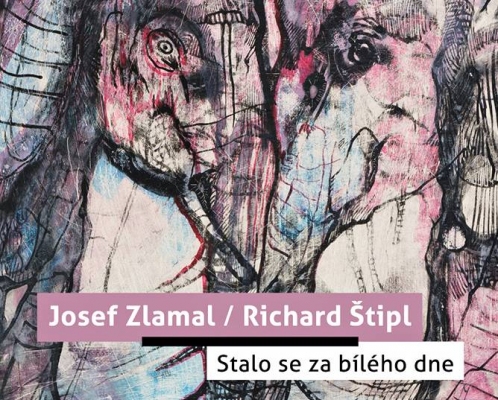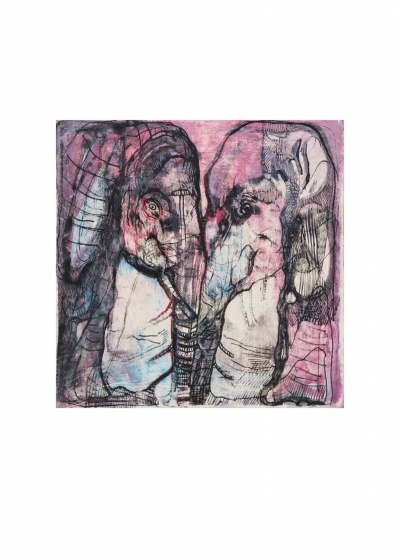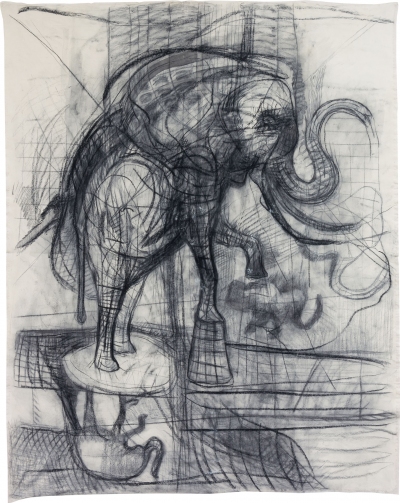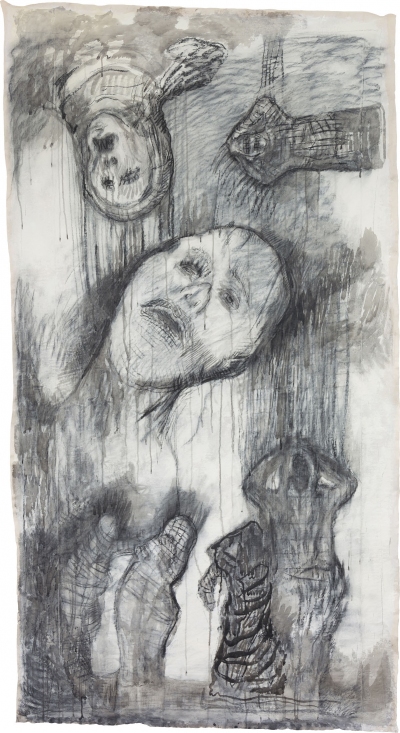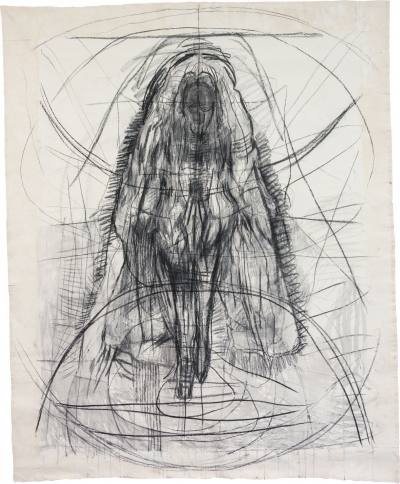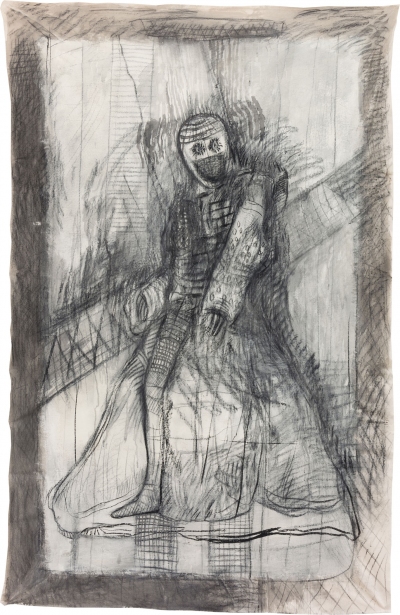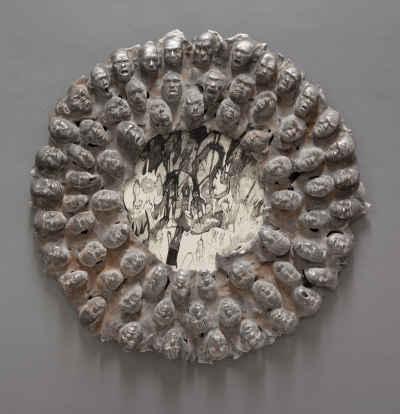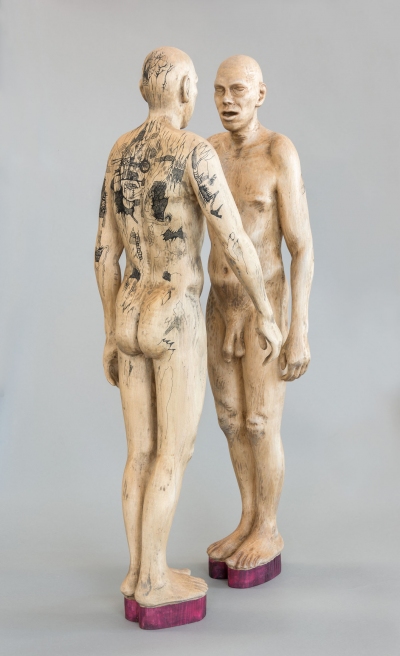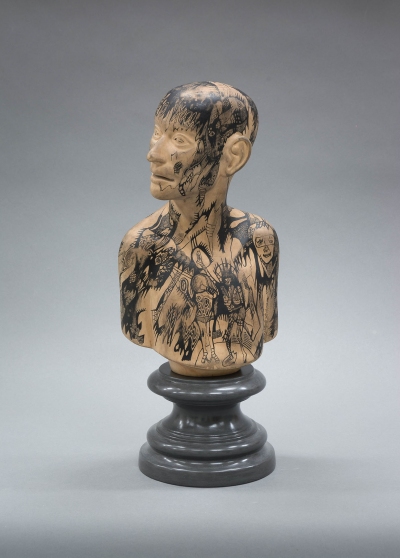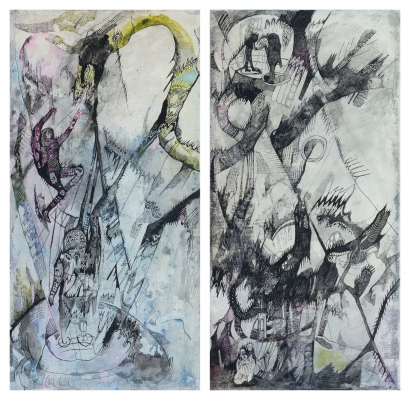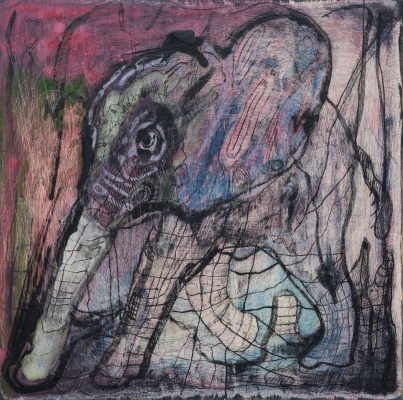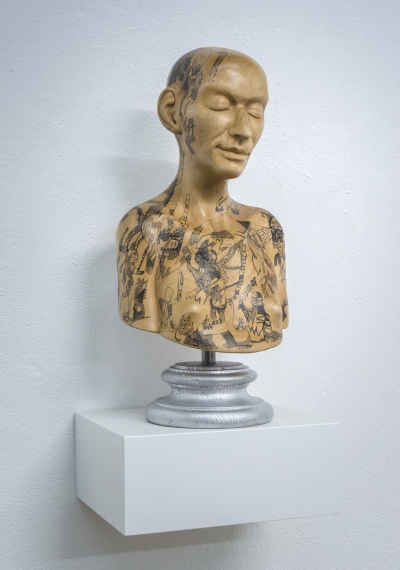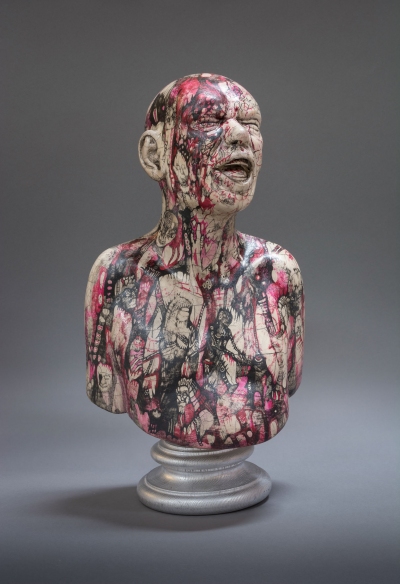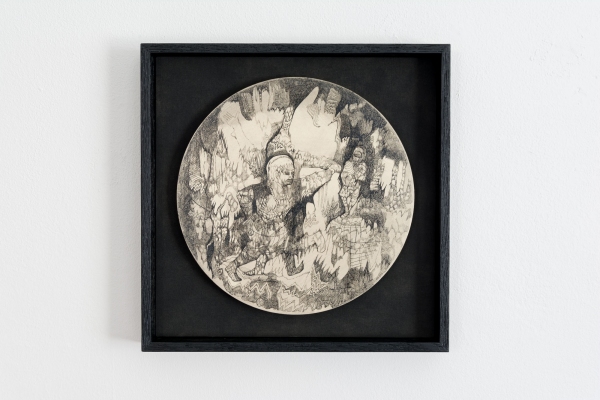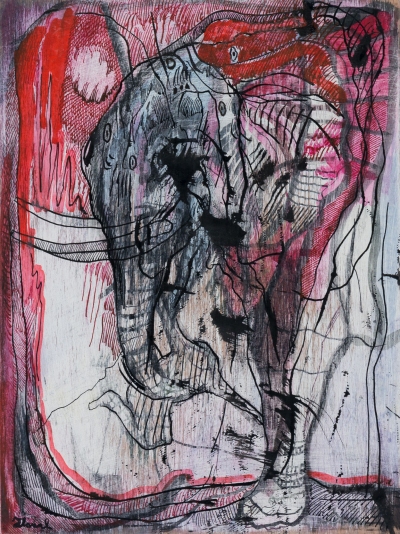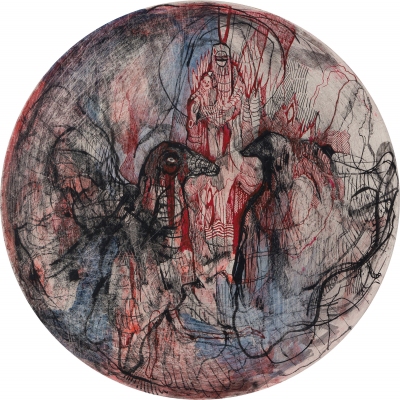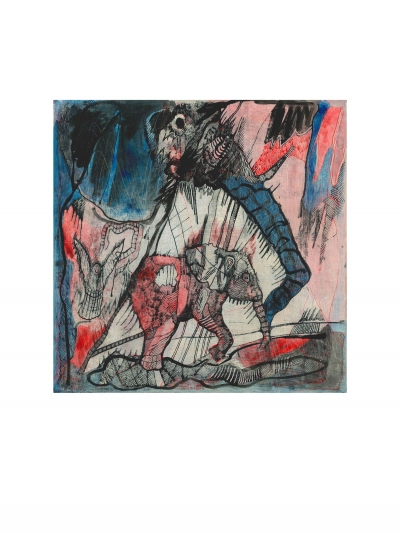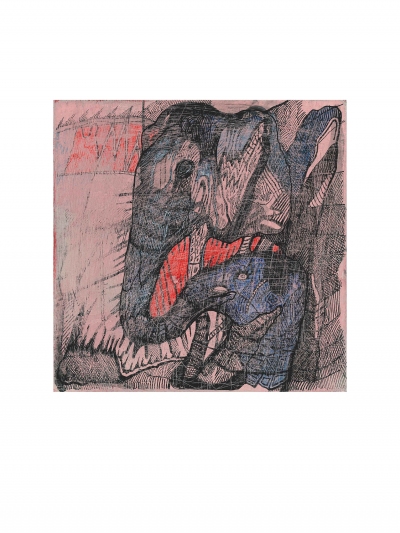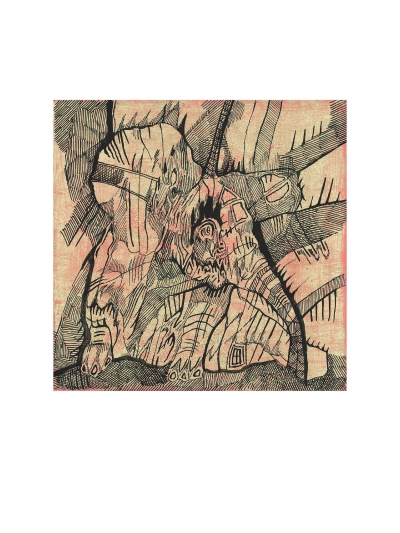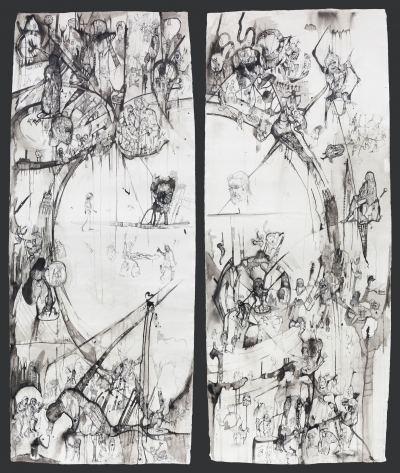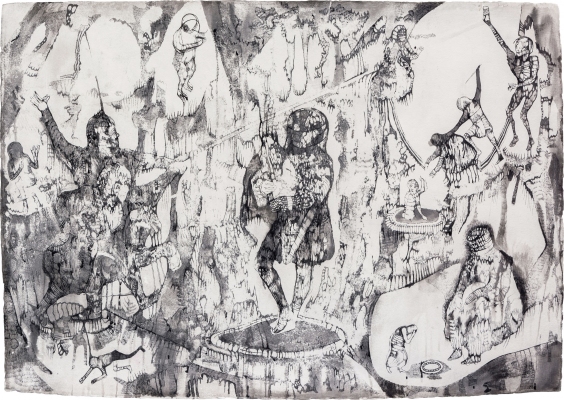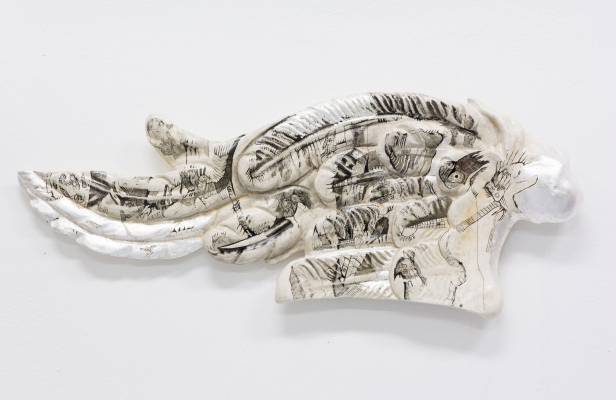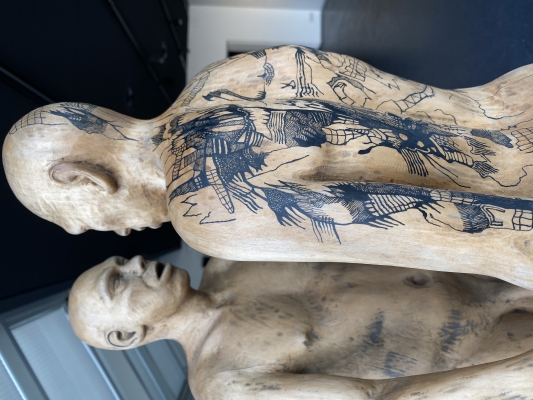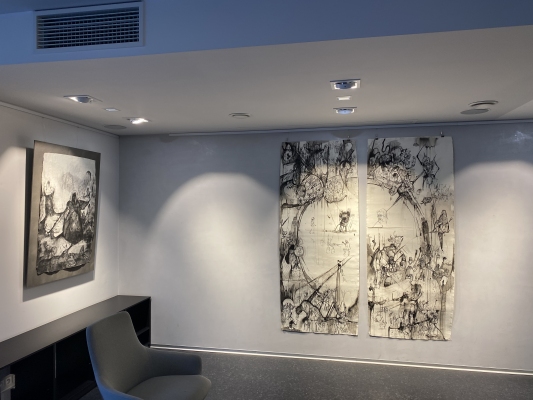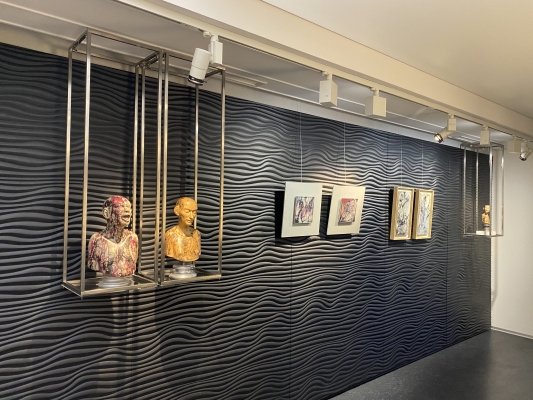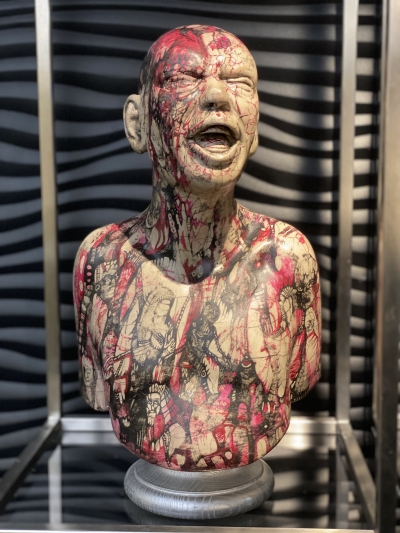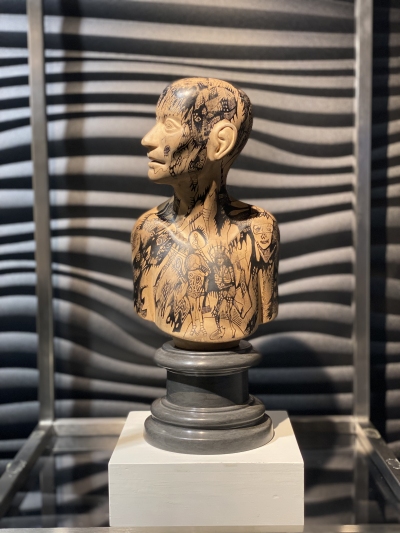12. 11. 2019 – 31. 1. 2020
Josef Zlamal / Richard Štipl – Stalo se za bílého dne
O AKCI A AUTORECH
Josef Zlamal + Richard Štipl – Stalo se za bílého dne
kurátor: Martin Dostál
Ve svých kresbách a obrazech navazuje mladý česko-německý umělec Josef Zlamal vzrušující dialog s různými fázemi vývoje umění. Přes svůj výrazný optimismus vyjadřuje ve svém díle obavu z přerušení civilizační a umělecké kontinuity, z přetržení existenciální nitě, která nás jako pupečční sňůra přidržuje při zdravém rozumu. Jako příslušník německo-české rodiny vnímá nutnost přesahu geografické a kulturní determinace, stejně jako nutnost intenzivní komunikace napříč jazyky, kulturami a uplývajícím časem. Své náročné kresebné dílo neuzavírá do sebe, ale otevírá ho k otevřenému dialogu s jinými díly, se kterými ho pojí ideové i formální souvislosti.Josef Zlamal se v roce 1983 narodil v moravském Šternberku do česko-německé umělecké rodiny. Prostředí, kde Josefův dědeček i otec byli vytvarnými umělci, a pochopitelně i vědomí poněkud odlišného původu od ryze českého prostředí, formovali mladého tvůrce osobitým směrem. Za hlavní výrazový prostředek si zvolil figurální kresbu, která svou expresí a exaltovaností nezapře výrazné odkazy, parafráze a citace pozdněgotického umění německé a vlámské provenience. Odtud pramení i motivy Zlamalových kreseb, jako je Genesis, Apokalypsa či hrdinství sv. Jiří, umělec je však vnímá v přesahu k dnešním situacím ve všedním i obecném životě. Ostatně v dalším plánu se odkazuje ke komiksu, k německému expresionismu či k němému filmu a filmu noir, nechybí ani vztah k postmoderním vyprávěním a uměleckým strategiím od 90. let minulého století po současnost. Nechybí ani inspirace z literárního světa Friedricha Dürrenmatta (odtud i název výstavy v Galerii Černá labuť), Thomase Bernharda nebo Karla Čapka. Zlamalova díla ale mají obecný a srozumitelný obsah, a ovšem zaujmou i nezúčastněného diváka mimořádnou kresebnou intenzitou. Poslední dobou se v jeho práci objevuje stále zřetelněji radostnější nota, nesená například motivy se světa zvířat. Josef nám tím sděluje, že přes vškerou vážnost a tíhu světa je možné, a možná i nutné, být přeci jen životním optimistou.V určitých fázích své tvorby také propojoval kresby s plastikami Richarda Štipla; na výstavě je zastoupeno několik jejich společných prací. Kresba na figurální plastice, nebo jako součást reliéfu, je nejen specifickým rozvinutím tendence, která se objevuje v plastice posledních více jak padesát let, tedy dotváření jejího povrchu barvou či jinými zásahy, ale zejména významově extenzivním zvýrazněním jejího smyslu.Česko-kanadský sochař střední generace Richard Štipl (narozen 23. března 1968 ve Šternberku) dokáže diváky svým plastickým, lehce hyperrealistickým světem, stáhnout hlouběji do hlubin vědomí, než by si přáli i v té nejtemnější počítačové hře. Richard je známý svými precizně vyvedenými sochami či seskupením soch, jejichž východiskem může být vyrovnání se se zmatky současné západní kulturní civilizace. Ve svých pracech, těžících také z dějin i současnosti umění, upozorňují na smysl i relativitu našich biologicky podmíněných životů, a konečně i celé člověčí existence. Syntéza impulsů, z nichž je patrně nejvýraznější právě hyperrealistická tendence, která se vine sochařstvím od pop-artu až do současnosti, je v Richardově podání dovedena do osobitého postoje, v němž převládají apokalyptické vize. Ty by nás měly šokovat, překvapovat, vzrušovat, dráždit, ale třeba i chlácholit, neboť kdo co víme o skrytých zákrutech lidských duší, včetně té mé i vaší. Zajímavý je i osobní příběh sochaře, který po emigraci se svými rodiči do Kanady vystudoval v letech 1987 až 1992 Ontario College of Art v Torontu. V současné době však žije trvale v České republice.
Martin Dostál, kurátor
ABOUT THE EXHIBITION AND THE ARTISTS
Josef Zlamal + Richard Štipl – It Happened in Broad Daylight
In his drawings, the young Czech-German artist Josef Zlamal establishes an exciting dialogue with various development stages of art. Despite his distinct optimism, he expresses fear in his work – fear of the civilizational and artistic continuity being interrupted, the existential thread being severed like an umbilical cord that was keeping us sane. As a member of a Czech-German family, he senses a need to go beyond the confines of geographic and cultural determination as well as the need of intensive communication across languages, cultures and time – which is constantly ticking away. Rather than shutting his work in itself, he opens it up for an open dialogue with other works, related thematically as well as formally.
Josef Zlamal was born in 1983 in the Moravian town of Šternberk into a Czech-German family with artistic heritage. Growing up in an environment where both his father and his grandfather were visual artists, together with the understandable awareness of a background somewhat different from the purely Czech surroundings, shaped Josef into a distinctive young artist. Figure drawing gradually emerged as his main form of expression, expressive and exalted, with distinct references, paraphrases and quotations of Late Gothic art of German and Flemish provenience. That is also the thematic source of Zlamal’s drawings, such as Genesis, Apocalypse or Heroism of St. George, the artist nevertheless perceives them as something crossing into everyday situations and life in general. For that matter, he further references the art of comics as well as German expressionism or silent film and film noir, there is also a relation to post-modern storytelling and artistic strategies from the 1990s up to the present. Inspiration by the literary worlds of Friedrich Dürrenmatt (hence the name of the exhibition in the Černá Labuť gallery), Thomas Bernhard and Karel Čapek are also of note. The substance of Zlamal’s work, however, is universal and clearly understandable, yet he still captivates impartial spectators by the extraordinary intensity of his drawing ability. In certain periods of his artistic development, he also tied his drawings to sculptures by Richard Stipl. Recently, there has been a happier note ever more noticeable in his work, carried for instance by themes of the animal world. Josef is letting us know that despite all the gravity and graveness of the world, it is still possible, or maybe even necessary, to be an optimist at heart.
In certain periods of his artistic development, he also linked his drawings with sculptures by Richard Štipl; several of their collaborative works can be seen at the exhibition. Drawing on a statue or as part of a relief is not only a specific development of a tendency that has been appearing in sculptures for the past more than fifty years, by finishing the surface using colour or other techniques, but most notably a substantively extensive accentuation of its meaning.
The Czech-Canadian sculptor Richard Štipl (born March 23, 1968, in Šternberk) is able to pull spectators into the depths of their consciousness – deeper than they would have liked even in the darkest computer games – using just his plastic, slightly hyper realistic world. Richard is known for his meticulously sculpted statues and sculptural groups that maybe originate from coping with the confusions in the contemporary western cultural civilization. Through their works, influenced by historic as well as contemporary art, they draw attention to the meaning and the relativity of our biologically dependent lives and ultimately the human existence as a whole. Richard’s version of the synthesis of impulses, the most prominent of which is the already established hyper realistic tendency, present in the art of sculpture since Pop art, is epitomized in his distinctive attitude dominated by apocalyptic visions. These should shock, surprise, excite, provoke and even console us, as who among us does truly know the hidden nooks and crannies of the human soul – like mine or yours. Another thing of note is the personal story of the sculptor who emigrated with his parents, settled in Canada and graduated from the Ontario College of Art and Design University in Toronto in 1992. Regardless, he now permanently resides in the Czech Republic.
Martin Dostál, curator
[119]

